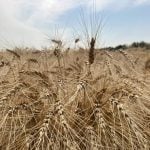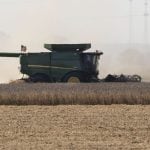
Beef Cattle

Producer survey stretches beef check-off dollars and supports consumer confidence
Research on the Record with Reynold Bergen
January’s column talked about the Canadian Cow-Calf Survey the Beef Cattle Research Council (BCRC) is running to help focus our research priorities and extension efforts. But the information from this survey also helps us demonstrate the value of research to government funders and helps support efforts to improve consumer confidence. The government angle is important […] Read more

Managing parasite resistance to livestock dewormers
There’s no easy way to extinguish resistance to dewormers, but producers can manage it and control parasites
The debate is over on whether internal parasites are developing resistance to dewormers in Canadian cow herds, as far as the research is concerned. But while researchers can offer some general principles, ranchers will need to get a little creative to figure out how to manage it on their own operations. Dr. John Gilleard is […] Read more

Shifting to the Sandhills calving system to cut scours in young beef calves
While it’s not for every operation, the Sandhills calving system can reduce diarrhea in young calves
Cow-calf producers across North America face wide-ranging challenges each calving season but scours and neonatal diarrhea often top the list. Various systems are used to help prevent what can become devastating losses when these pathogens gain a foothold. An established approach still growing in popularity is the Sandhills calving system, designed to separate newborns and […] Read more
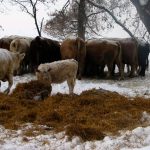
Assessing malnutrition in beef cows: Part 1
Vet Advice with Dr. Ron Clarke
I never cease to wonder why some producers starve cattle through the winter. Fortunately, they represent a very small percentage of producers, but their lack of care has a big effect on those who drive along the road and see starvation first-hand — downer and dead cattle left in plain sight, matts of hair on […] Read more

How to spot respiratory acidosis in a newborn calf
Most beef producers know the frustration that accompanies dealing with the dreaded “dummy calf”. These calves will not suckle, won’t sit up or stand and stare blankly with what seems to be a lack of will and intelligence to survive despite your best efforts. This lack of coordinated movement is often due to respiratory acidosis. […] Read more
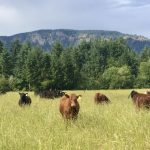
Cattle ranching on Vancouver Island
While the climate is milder than the Prairies, island producers must contend with a small land base, high land prices and the cost of ferries
Vancouver Island contains a variety of landscapes: beaches with shells and the corpses of moon jellyfish, the frigid water of the Pacific Ocean washing in and out. A rugged, snow-capped mountain range looms over the island. Redwood trees reach high into the sky, the forest floor sheltered and mossy. There are grasslands here, too, in […] Read more
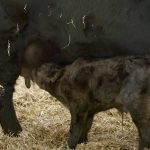
How to evaluate newborn calves using the calf VIGOR scoring system
Ideally, after a calf is born, things go well, and the cow and newborn calf thrive. However, it is important for producers to know how to assess calves for subtle signs of distress or trauma that can occur due to a difficult calving. Good vigor is a vital characteristic. A vigorous newborn calf has the best chance […] Read more
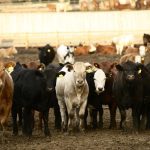
Constellation of cattle futures prices and futures markets spreads
Market Talk with Jerry Klassen
The live and feeder cattle futures markets experienced sharp downward price behaviour during the final quarter of 2024. Although the price weakness was being influenced by the nearby fundamentals, the deferred live and feeder cattle contracts were also trending lower. In this article, I’m going to discuss market behaviour referred to as the “constellation of […] Read more

Auction mart report for the week of March 8, 2024
Regional market analysis from Manitoba, courtesy of the Livestock Markets Association of Canada members.
Western Manitoba, courtesy of Heartland Livestock Services Virden saw 650 cattle through the ring over this snow week. Half of those cattle were bred cows, 30 per cent butcher cattle and the remaining 20 per cent feeders. Local buyers purchased 20 per cent of those animals, eastern buyers another 20 per cent, American buyers 10 […] Read more

Livestock vaccines: An ounce of prevention
Research on the Record with Reynold Bergen
Vaccines are an important tool to help minimize pre-weaning calf illness and death early in life, reduce the risk of reproductive failure in the breeding herd and help improve colostrum’s ability to protect next year’s calf crop when it hits the ground. Vaccine technology, programs and practices are constantly evolving. All the options can be […] Read more

